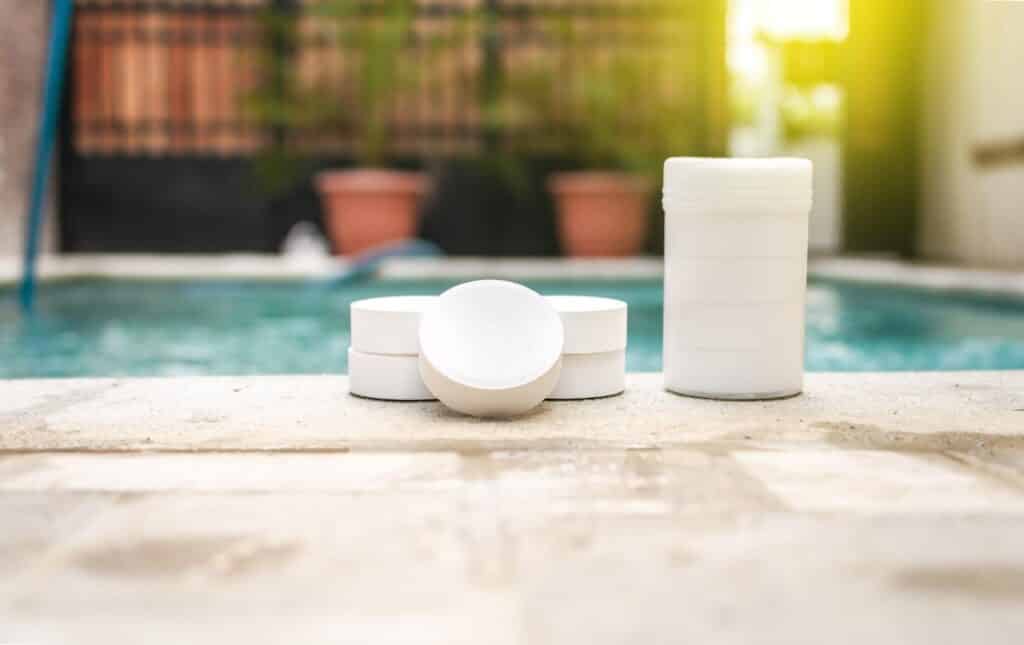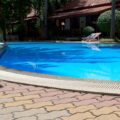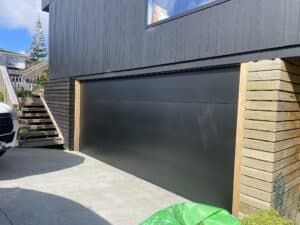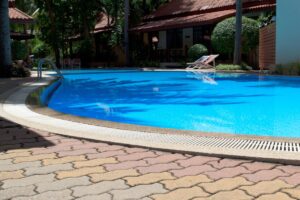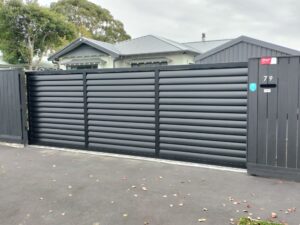When it comes to maintaining a clean and healthy concrete pool or acrylic spa pool in New Zealand, choosing the most suitable sanitation method is crucial.
Using the most ideal sanitation system not only ensures the water is safe for swimming but also prolongs the life of the pool’s surfaces and equipment. There are a few key options to consider, each with its own benefits, so it’s essential to understand which system best suits the specific needs of the pool or spa.
Chlorine
Chlorine has been the go-to pool sanitiser for decades. It works by breaking down bacteria, viruses, and algae, ensuring the water remains clear and safe to swim in. Chlorine is available in tablet, liquid, and granular forms, making it versatile and easy to use.
For pools exposed to New Zealand’s intense sun, stabilised chlorine is often preferred as it resists UV degradation. However, it can be harsh on sensitive skin and requires regular testing to maintain proper levels.
Pros:
- Widely available and affordable
- Highly effective at killing harmful organisms
Cons:
- It can irritate the skin and eyes
- Needs frequent monitoring and adjustment
Chlorine is the most widely used sanitiser for concrete pools in New Zealand. It’s a powerful disinfectant that effectively kills bacteria, algae, and other harmful contaminants.
Concrete pools are more porous than other types of pools, making them more susceptible to algae growth and the need for effective sanitisation. Chlorine is a reliable choice to keep these pools clean.
For concrete pools, using stabilised chlorine is recommended to protect the sanitiser from being broken down by the sun’s UV rays, especially in New Zealand’s sunny climate. Chlorine levels must be regularly tested and adjusted to maintain a safe and balanced swimming environment.
Saltwater Chlorination for Concrete Pools
Saltwater systems are becoming increasingly popular for concrete pools. The process involves converting dissolved salt into chlorine, but at lower concentrations, creating a more comfortable swimming experience. Saltwater is much gentler on the skin and eyes, which is essential for families or those who swim frequently.
Saltwater systems help reduce the amount of manual chlorine handling for concrete pools. Still, it’s essential to monitor for any salt-induced corrosion on metal fittings or pool surfaces. Proper maintenance and balance ensure a concrete pool thrives under this system.
Best For: Concrete pool owners looking for a softer, lower-maintenance sanitation option.
Pros:
- Lower chlorine levels, and gentler on the skin
- Much easier to maintain consistent sanitation
Cons:
- Initial installation costs can be higher
- This can lead to corrosion in metal components if not correctly balanced
Mineral Sanitation for Concrete Pools and Acrylic Spas
Mineral sanitation is a luxurious option for both concrete pools and acrylic spa pools. They use minerals such as magnesium and potassium, which are not only gentler on surfaces but also provide a more enjoyable swimming experience.
Mineral systems are less harsh on concrete and acrylic materials, making them ideal for those looking for a smoother feel in both pool and spa water.
Concrete pools benefit from the mineral pool system’s ability to reduce chemical wear and tear on the pool’s surface, while acrylic spa pools are protected from the harsher effects of traditional chlorine. The minerals can have added therapeutic effects for spa pools, which is a bonus for users looking for relaxation.
Best For: Both concrete pools and acrylic spas; ideal for pool owners seeking a more luxurious, therapeutic experience.
Pros:
- Gentler on pool and spa surfaces
- Beneficial for your skin and health
Cons:
- Has a higher initial setup cost
- Requires small amounts of chlorine or oxidiser to maintain balance
Ozone Sanitation for Acrylic Spa Pools
Ozone sanitation is another fantastic option for acrylic spa pools. Ozone systems work by injecting ozone gas into the water, which then oxidises and breaks down bacteria and organic matter.
While ozone systems don’t eliminate the need for all chemicals, they dramatically reduce the reliance on them, which is beneficial for acrylic spa pools that are prone to chemical damage.
Ozone is less commonly used for larger concrete pools due to the scale of installation required. Still, it’s a perfect match for smaller acrylic spa pools. The ozone system helps maintain the clarity and freshness of spa water while protecting the acrylic material from harsh chemicals.
Best For: Acrylic spa pools looking for a chemical-free or low-chemical sanitation method.
Pros:
- Strong disinfectant with less chemical use
- Protects sensitive acrylic spa surfaces
Cons:
- High upfront installation cost
- Still requires a secondary sanitiser, like chlorine or bromine
UV Sanitation
Ultraviolet (UV) sanitisation systems are becoming more common in New Zealand pools. UV systems pass pool water through a chamber exposed to UV light, killing bacteria and algae.
While UV does not leave any chemical residue, it’s often combined with chlorine or another residual sanitiser to ensure complete protection. This system is particularly beneficial for those sensitive to chemicals or seeking an environmentally friendly option.
UV Sanitation is Great for Concrete Pools and Acrylic Spas
UV sanitation is another option that works really well for both concrete swimming pools, spas and acrylic spa pools. UV systems pass water through a chamber where it’s exposed to ultraviolet light, which then neutralises bacteria, viruses, and algae.
UV systems are an excellent choice for acrylic spa pools as they minimise chemical exposure, protecting the spa’s delicate surface.
Concrete pools also benefit from UV sanitation when combined with a secondary system such as chlorine, as the UV light helps to reduce overall chemical consumption.
Best For: Both concrete pools and acrylic spas, especially for those looking to reduce chemical usage.
Pros:
- Environmentally friendly and reduces chemical use
- Effective in controlling bacteria and algae
Cons:
- UV sanitation requires regular maintenance of the UV lamp
- It still needs a secondary sanitiser like chlorine
Conclusion
When it comes to choosing the right sanitation for concrete pools and acrylic spa pools, it’s important to consider the specific needs of each type of installation. Concrete pools often benefit from chlorine or saltwater systems, which are effective in controlling algae and bacteria.
Meanwhile, acrylic spa pools do best with systems that minimise harsh chemical exposure, such as ozone or UV sanitation. Mineral pools offer a luxurious option that works well for both pool types, providing gentle and therapeutic water that’s easy on surfaces and skin. Ultimately, the right system will depend on personal preferences, budget, and maintenance requirements.
Take a look our article on How to Choose a Spa Pool.

